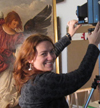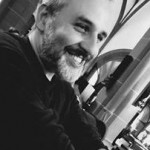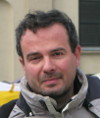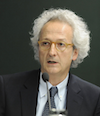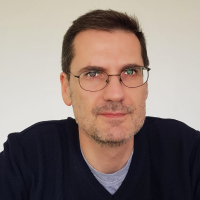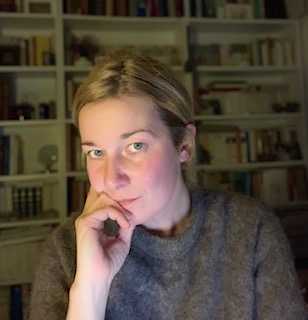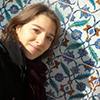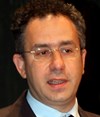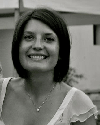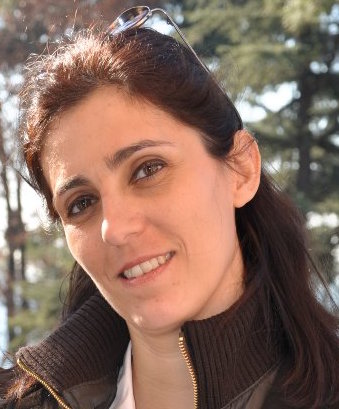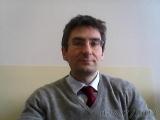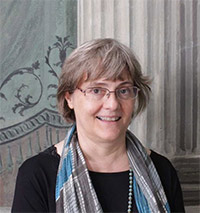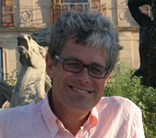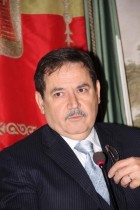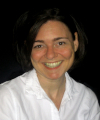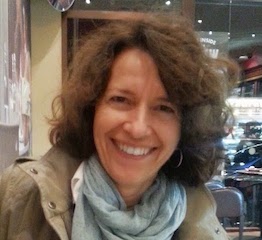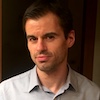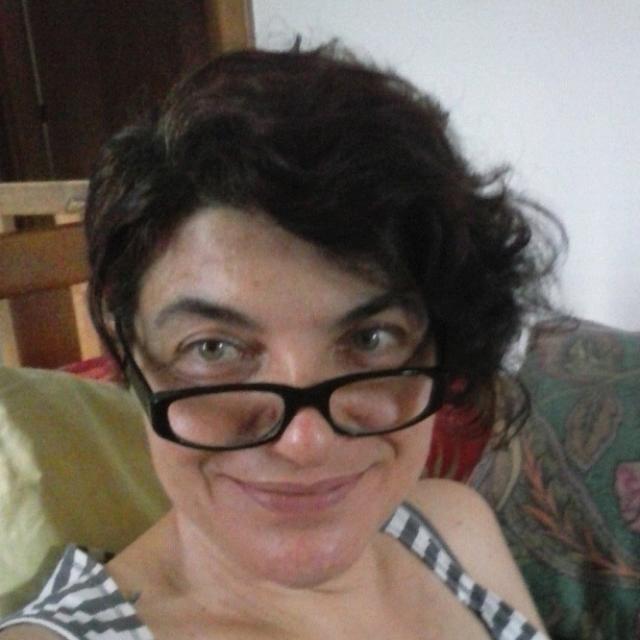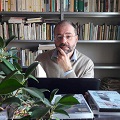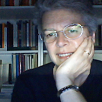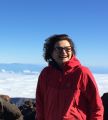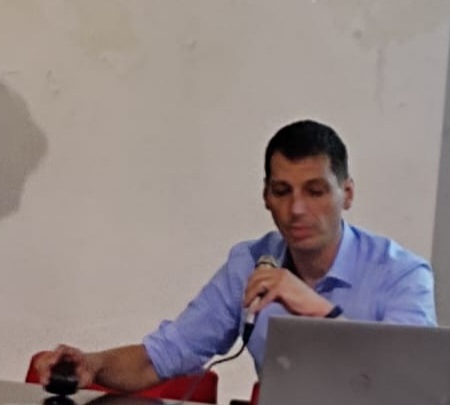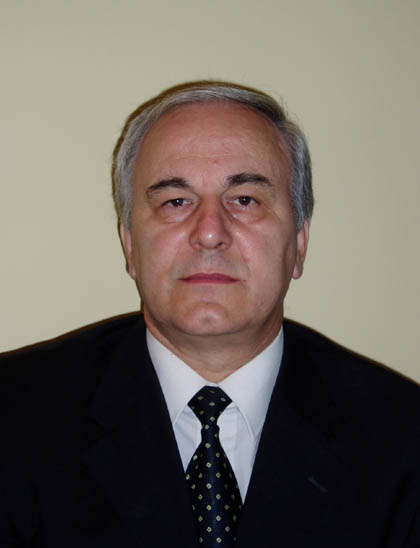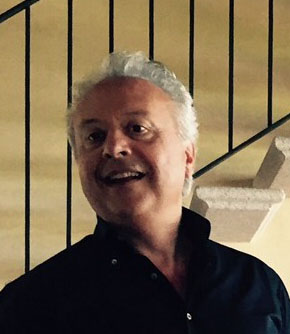Studying at the University of Verona
Here you can find information on the organisational aspects of the Programme, lecture timetables, learning activities and useful contact details for your time at the University, from enrolment to graduation.
Academic calendar
The academic calendar shows the deadlines and scheduled events that are relevant to students, teaching and technical-administrative staff of the University. Public holidays and University closures are also indicated. The academic year normally begins on 1 October each year and ends on 30 September of the following year.
Course calendar
The Academic Calendar sets out the degree programme lecture and exam timetables, as well as the relevant university closure dates..
| Period | From | To |
|---|---|---|
| Sem. IA (31.10.16 sosp.lezioni) | Oct 3, 2016 | Nov 12, 2016 |
| Sem. IB | Nov 14, 2016 | Jan 21, 2017 |
| Sem. IIA | Feb 27, 2017 | Apr 22, 2017 |
| Sem. IIB | Apr 24, 2017 | Jun 10, 2017 |
| Session | From | To |
|---|---|---|
| Sessione d'esami invernale | Jan 23, 2017 | Feb 25, 2017 |
| Sessione d'esame estiva | Jun 12, 2017 | Jul 29, 2017 |
| Sessione d'esami autunnale | Aug 21, 2017 | Sep 23, 2017 |
| Session | From | To |
|---|---|---|
| Sessione di Laurea Estiva | Jul 10, 2017 | Jul 15, 2017 |
| Sessione di Laurea Autunnale | Dec 18, 2017 | Dec 21, 2017 |
| Sessione di Laurea Invernale | Mar 23, 2018 | Mar 29, 2018 |
| Period | From | To |
|---|---|---|
| Festa di Ognissanti | Nov 1, 2016 | Nov 1, 2016 |
| Festa dell'Immacolata | Dec 8, 2016 | Dec 8, 2016 |
| Vacanze Natalizie | Dec 23, 2016 | Jan 7, 2017 |
| Vacanze Pasquali | Apr 14, 2017 | Apr 18, 2017 |
| Festa della Liberazione | Apr 25, 2017 | Apr 25, 2017 |
| Festa dei Lavoratori | May 1, 2017 | May 1, 2017 |
| Festa del Santo Patrono - San Zeno | May 21, 2017 | May 21, 2017 |
| Festa della Repubblica | Jun 2, 2017 | Jun 2, 2017 |
| Vacanze Estive | Aug 14, 2017 | Aug 19, 2017 |
Exam calendar
Exam dates and rounds are managed by the relevant Culture and Civilisation Teaching and Student Services Unit.
To view all the exam sessions available, please use the Exam dashboard on ESSE3.
If you forgot your login details or have problems logging in, please contact the relevant IT HelpDesk, or check the login details recovery web page.
Should you have any doubts or questions, please check the Enrollment FAQs
Academic staff
 bernard.aikema@univr.it (per tutti), aikemaforstudents@gmail.com (per studenti)
bernard.aikema@univr.it (per tutti), aikemaforstudents@gmail.com (per studenti)
 +39 045802 8197
+39 045802 8197

Bassetti Massimiliano
 massimiliano.bassetti@univr.it
massimiliano.bassetti@univr.it
 045802 8376
045802 8376
 maurizio.boscaini@univr.it
maurizio.boscaini@univr.it
 stefania.cretella@univr.it
stefania.cretella@univr.it
 vincenzo.giannotti@univr.it
vincenzo.giannotti@univr.it
 piergiovanna.grossi@univr.it
piergiovanna.grossi@univr.it
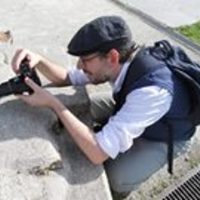
Guidarelli Gianmario
 gianmario.guidarelli@univr.it
gianmario.guidarelli@univr.it
 elisa.lerco@univr.it
elisa.lerco@univr.it
 francesco.lupi@univr.it
francesco.lupi@univr.it
 stefano.maltese@univr.it
stefano.maltese@univr.it
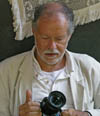
Mastrocinque Attilio
 attilio.mastrocinque@univr.it
attilio.mastrocinque@univr.it
 +39 045802 8386
+39 045802 8386
 marco.menato@univr.it
marco.menato@univr.it
 marta.minazzato@univr.it
marta.minazzato@univr.it
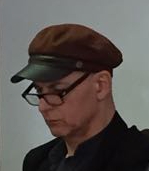
Pasini Roberto
 pasini.roberto@univr.it
pasini.roberto@univr.it
 +39 045802 8121
+39 045802 8121
 alberto.scandola@univr.it
alberto.scandola@univr.it
Study Plan
The Study Plan includes all modules, teaching and learning activities that each student will need to undertake during their time at the University.
Please select your Study Plan based on your enrollment year.
1° Year
| Modules | Credits | TAF | SSD |
|---|
One course to be chosen among the following2° Year activated in the A.Y. 2017/2018
| Modules | Credits | TAF | SSD |
|---|
One course to be chosen among the following3 course to be chosen among the following2 course to be chosen among the followingOne course to be chosen among the following3° Year activated in the A.Y. 2018/2019
| Modules | Credits | TAF | SSD |
|---|
One course to be chosen among the followingOne course to be chosen among the following3 course to be chosen among the following| Modules | Credits | TAF | SSD |
|---|
One course to be chosen among the following| Modules | Credits | TAF | SSD |
|---|
One course to be chosen among the following3 course to be chosen among the following2 course to be chosen among the followingOne course to be chosen among the following| Modules | Credits | TAF | SSD |
|---|
One course to be chosen among the followingOne course to be chosen among the following3 course to be chosen among the following| Modules | Credits | TAF | SSD |
|---|
Legend | Type of training activity (TTA)
TAF (Type of Educational Activity) All courses and activities are classified into different types of educational activities, indicated by a letter.
Type D and Type F activities
| years | Modules | TAF | Teacher | |
|---|---|---|---|---|
| 2° | Latin Epigraphy (i) | D |
Alfredo Buonopane
(Coordinator)
|
|
| 2° | History of Medieval Architecture (i) | D |
Fabio Coden
(Coordinator)
|
|
| 2° 3° | History of the Republic of Venice (p) | D |
Federico Barbierato
(Coordinator)
|
|
| 2° 3° | European Art History (i) | D |
Bernard Jan Hendrik Aikema
(Coordinator)
|
|
| 1° 2° 3° | Castelvecchio Lectures (City Art Museums) | F |
Alessandra Zamperini
(Coordinator)
|
|
| 1° 2° 3° | San Rocco lectures (Quinzano) | F |
Alessandra Zamperini
(Coordinator)
|
|
| 1° 2° 3° | C.T.G. Lectures | F |
Alessandra Zamperini
(Coordinator)
|
|
| 1° 2° 3° | Graphical representation of archaeological evidence I | F |
Giuliana Maria Facchini
(Coordinator)
|
|
| 1° 2° 3° | Karis - I ciclo | F |
Tiziana Franco
(Coordinator)
|
|
| 1° 2° 3° | Archeology laboratory of instrumentum domesticum | F |
Giuliana Maria Facchini
(Coordinator)
|
|
| 1° 2° 3° | Museology (i) | D |
Valerio Terraroli
(Coordinator)
|
|
| years | Modules | TAF | Teacher | |
|---|---|---|---|---|
| 2° | Medieval archaeology (i) | D |
Fabio Saggioro
(Coordinator)
|
|
| 2° 3° | History of the Republic of Venice (p) | D |
Federico Barbierato
(Coordinator)
|
|
| 1° 2° 3° | Castelvecchio Lectures (City Art Museums) | F |
Alessandra Zamperini
(Coordinator)
|
|
| 1° 2° 3° | San Rocco lectures (Quinzano) | F |
Alessandra Zamperini
(Coordinator)
|
|
| 1° 2° 3° | C.T.G. Lectures | F |
Alessandra Zamperini
(Coordinator)
|
|
| 1° 2° 3° | Graphical representation of archaeological evidence I | F |
Giuliana Maria Facchini
(Coordinator)
|
|
| 1° 2° 3° | Karis - II ciclo | F |
Tiziana Franco
(Coordinator)
|
|
| 1° 2° 3° | Archeology laboratory of instrumentum domesticum | F |
Giuliana Maria Facchini
(Coordinator)
|
|
| 1° 2° 3° | How to write your dissertation | F |
Alessandro Arcangeli
(Coordinator)
|
|
| 1° 2° 3° | Tracce nascoste | F |
Monica Molteni
(Coordinator)
|
|
| years | Modules | TAF | Teacher |
|---|---|---|---|
| 1° 2° 3° | Bibliography and Librarianship (i) | D |
Marco Menato
(Coordinator)
|
| 1° 2° 3° | Classification of archaeological Finds | F |
Giuliana Maria Facchini
(Coordinator)
|
| 1° 2° 3° | Castelvecchio Lectures (City Art Museums) | F |
Alessandra Zamperini
(Coordinator)
|
| 1° 2° 3° | San Rocco lectures (Quinzano) | F |
Alessandra Zamperini
(Coordinator)
|
| 1° 2° 3° | C.T.G. Lectures | F |
Alessandra Zamperini
(Coordinator)
|
| 1° 2° 3° | Graphical representation of archaeological evidence II | F |
Giuliana Maria Facchini
(Coordinator)
|
| 1° 2° 3° | Basic laboratory of data | F |
Maurizio Boscaini
(Coordinator)
|
| 1° 2° 3° | Laboratory of photo | F |
Marco Ambrosi
(Coordinator)
|
| 1° 2° 3° | Representation and Meaning in the Female Fashion between Renaissance and Baroque | F |
Alessandra Zamperini
(Coordinator)
|
| years | Modules | TAF | Teacher |
|---|---|---|---|
| 1° 2° 3° | 1887-2017: 130 years of the Museum of Ateste | F |
Patrizia Basso
(Coordinator)
|
| 1° 2° 3° | Classification of archaeological Finds | F |
Giuliana Maria Facchini
(Coordinator)
|
| 1° 2° 3° | C.T.G. Lectures | F |
Alessandra Zamperini
(Coordinator)
|
| 1° 2° 3° | Graphical representation of archaeological evidence II | F |
Giuliana Maria Facchini
(Coordinator)
|
| 1° 2° 3° | Ephigraphy of production and distribution | F |
Alfredo Buonopane
(Coordinator)
|
| 1° 2° 3° | In Itinere: Verona and the roman roads | F |
Patrizia Basso
(Coordinator)
|
| 1° 2° 3° | Laboratory of medieval archaeology | F |
Fabio Saggioro
(Coordinator)
|
| 1° 2° 3° | Workshop of Cultural Heritage Photography | F |
Stefano Marziali
(Coordinator)
|
| 1° 2° 3° | How to write your dissertation | F |
Alessandro Arcangeli
(Coordinator)
|
| years | Modules | TAF | Teacher |
|---|---|---|---|
| 1° 2° 3° | Archaeological research on the northern part of the Civita of Tarquinia | F |
Attilio Mastrocinque
(Coordinator)
|
| 1° 2° 3° | Archaeological excavation in Aquileia | F |
Patrizia Basso
(Coordinator)
|
| 1° 2° 3° | Scavo archeologico di Bastia di San Michele di Cavaion | F |
Fabio Saggioro
(Coordinator)
|
| 1° 2° 3° | Scavo archeologico di Canossa | F |
Fabio Saggioro
(Coordinator)
|
| 1° 2° 3° | Archaeological excavation in Gazzo Veronese | F |
Patrizia Basso
(Coordinator)
|
| 1° 2° 3° | Field archaeological research in Leno Monastery | F |
Fabio Saggioro
(Coordinator)
|
| 1° 2° 3° | Field archaeological research in Piuro settlement | F |
Fabio Saggioro
(Coordinator)
|
Topography of Ancient Italy (i) (2018/2019)
Teaching code
4S01193
Teacher
Coordinator
Credits
6
Language
Italian
Scientific Disciplinary Sector (SSD)
L-ANT/09 - ANCIENT TOPOGRAPHY
Period
Sem. 1B dal Nov 19, 2018 al Jan 12, 2019.
Learning outcomes
The course addresses the subject of the relationship that arose between man and the environement in ancient times, with particular reference to the Roman era.
The expected learning outcomes are:
KNOWLEDGE
1. Knowledge of the sources, tools and methodologies used in the reconstruction of the ancient environment with particular focus on road networks, agrarian organisation and urban development.
2. Knowledge of the influence of geographical factors on the origin and development of settlements and the environmental changes caused by man.
SKILLS
1. Correct use of basic archaeological terminology, particularly that related to the ancient landscape.
2. Application of an interdisciplinary methodological approach to the reading and interpretation of the ancient world.
3. Analysis and understanding of the main sources employed in historical/archaeological study (literary, epigraphic, material).
Program
The first part of the course will address general topics:
1. the meaning and value of historical topography;
2. the tools and methods for the study and reconstruction of the ancient environment;
3. roman roads: sources and research methodology;
4. centuriation and the rural population;
5. urban structures.
The second part of the course will address these same themes in the context of Roman Venetia, employing, inter alia, concrete applications from research projects in which Patrizia Basso is involved.
There are no prerequisites but it would be preferable that students have a basic knowledge of Roman history and Classical archaeology.
Classroom sessions will involve Powerpoint lectures and the slides will be made available to the students online. An integral part of the course will be a series of guided visits that will be arranged with the students at the start of the course on the basis of their interests and availability,
Students who complete the course will be offered the opportunity to participate in summer fieldwork in Aquileia and the lower Verona plain, under the direction of Patrizia Basso.
Course texts
Lecture notes and illustrative material will be provided on the e-learning platform (PowerPoint of the lectures) and should be used with the following:
1. For the first part of the course (especially for those students that do not attend lectures), the manual G. BONORA, P.L. DALL’AGLIO, S. PATITUCCI, G. UGGERI, La topografia antica, Cleub, Bologna 2000
2. For the second part of the course, the volume J. BONETTO, Veneto, Archeologia delle Regioni d’Italia, Libreria dello Stato - Istituito Poligrafico e Zecca dello Stato, Roma 2009 (2 chapters for those that attend lectures and 4 for those that do not – in each case, to be chosen on the basis of personal interests).
Other texts may also be selected with the agreement of the Patrizia Basso.
| Author | Title | Publishing house | Year | ISBN | Notes |
|---|---|---|---|---|---|
| G. BONORA, P.L. DALL’AGLIO, S. PATITUCCI, G. UGGERI | La topografia antica | Cleub | 2000 | Manuale di riferimento soprattutto per i non frequentanti. Si legga il programma per dettagli | |
| J. Bonetto | Veneto, Archeologia delle Regioni d’Italia | Libreria dello Stato - Istituito Poligrafico e Zecca dello Stato | 2009 | Il testo non va studiato integralmente: vanno scelti alcuni capitoli a seconda degli interessi personali. Si legga il programma per dettagli informativi |
Examination Methods
The objective of the exam is to verify the achievement of the previously specified expected learning outcomes.
The exam for both the students attending lectures and those not attending will have both written and oral components. The written test will focus on 5 open questions, structured around images from the slides provided online. During the course examples of the type of questions to be asked will be presented. Evaluation of the written work will take into account knowledge, ability to synthesise, and ability to communicate in written form using appropriate terminology.
Once the students have passed the written exam, each student will present, in a oral exam, on topics related to the second course that the student has chosen on the basis of personal interests. Evaluation will take into account knowledge, skills demonstrated and capacity to express oneself orally using appropriate terminology. The final grade will be the average of those achieved in the two tests.
Career prospects
Module/Programme news
News for students
There you will find information, resources and services useful during your time at the University (Student’s exam record, your study plan on ESSE3, Distance Learning courses, university email account, office forms, administrative procedures, etc.). You can log into MyUnivr with your GIA login details: only in this way will you be able to receive notification of all the notices from your teachers and your secretariat via email and soon also via the Univr app.
Graduation
List of theses and work experience proposals
| theses proposals | Research area |
|---|---|
| Ambiti di tesi | Art & Architecture - Art & Architecture |
| Stage | Research area |
|---|---|
| Lavorare in archivio | Various topics |


